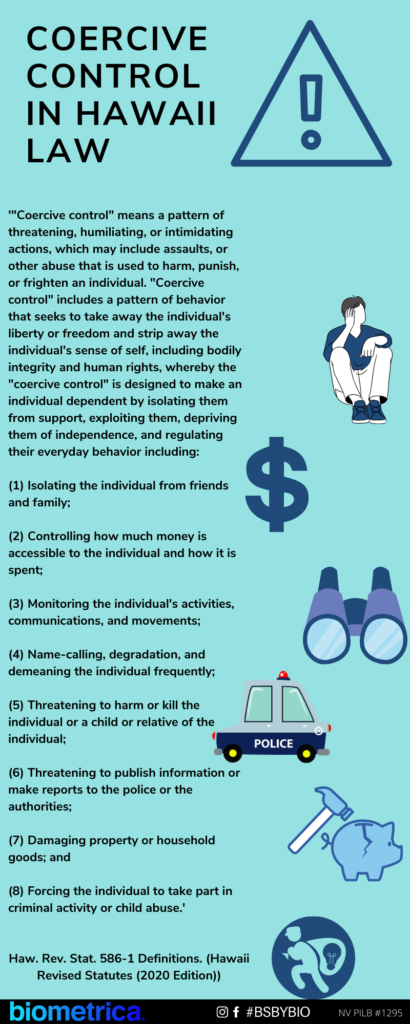The Legal Battle Against Coercive Control is Just Beginning
By Charlotte Spencer
There is a form of abuse that is still not illegal in most of the United States, not because anyone decided it should be legal, but because of a lack of awareness. It often accompanies other forms of abuse, and can be more difficult to spot and prosecute than other forms of abuse. It’s called coercive control, and it’s finally gaining some notice from lawmakers.
What is coercive control?
There are a variety of definitions out there for coercive control, but they all boil down to the same thing. Coercive control is a method of controlling another person against that person’s will, through methods such as isolation, deprivation, monitoring, financial control, threats, and other means. Coercive control can sometimes fit a similar behavior pattern to stalking, although coercive control is often done to a significant other, or family member who the perpetrator is still living with. Cambridge Dictionary defines it as, “control of another person’s behavior by using force or threats, or by causing fear.”
What are the laws against it?
California
Coercive control is illegal in California as a result of SB1141. It defines coercive control as, “a pattern of behavior that in purpose or effect unreasonably interferes with a person’s free will and personal liberty.”
It lists as examples:
(1) Isolating the other party from friends, relatives, or other sources of support.
(2) Depriving the other party of basic necessities.
(3) Controlling, regulating, or monitoring the other party’s movements, communications, daily behavior, finances, economic resources, or access to services.
(4) Compelling the other party by force, threat of force, or intimidation, including threats based on actual or suspected immigration status, to engage in conduct from which the other party has a right to abstain, or to abstain from conduct in which the other party has a right to engage.
Hawaii
Coercive control is illegal in Hawaii as a result of HB2425. It defines coercive control as, “a pattern of threatening, humiliating, or intimidating actions, which may include assaults, or other abuse that is used to harm, punish, or frighten an individual. Coercive control includes a pattern of behavior that seeks to take away the individual’s liberty or freedom and strip away the individual’s sense of self, including bodily integrity and human rights, whereby the coercive control is designed to make an individual dependent by isolating them from support, exploiting them, depriving them of independence, and regulating their everyday behavior …”
It lists as examples:
(1) Isolating the individual from friends and family;
(2) Controlling how much money is accessible to the individual and how it is spent;
(3) Monitoring the individual’s activities, communications, and movements;
(4) Name-calling, degradation, and demeaning the individual frequently;
(5) Threatening to harm or kill the individual or a child or relative of the individual;
(6) Threatening to publish information or make reports to the police or the authorities;
(7) Damaging property or household goods; and
(8) Forcing the individual to take part in criminal activity or child abuse.”
Other States
Other states have proposed legislation, but nothing that has passed yet. Some states have incorporated teaching about coercive control in programs they were already running to address domestic violence. There are also a few laws against coercive control in other parts of the world. To look for proposed legislation in your area check out this useful bill tracker provided by America’s Conference to End Coercive Control.
What more is needed?
At this time there is still no federal law against coercive control in the United States. In addition, most states and local jurisdictions do not yet have laws on the books concerning coercive control either. Strong federal and state law is needed to completely address this problem.

The writer is a lawyer and a coder, and a member of the Arizona bar.
If you have feedback on this article, please write to us at marketing@biometrica.com.